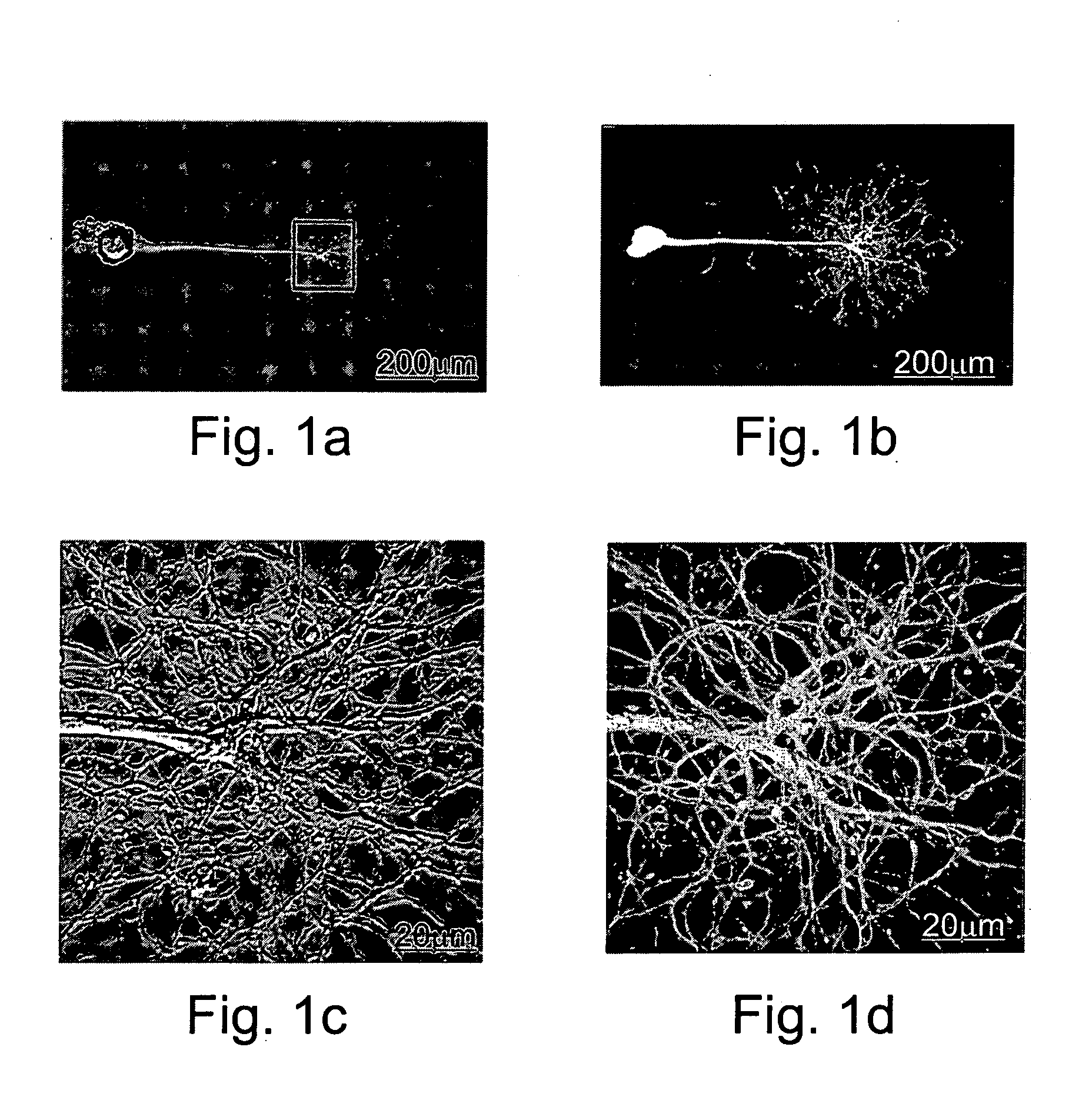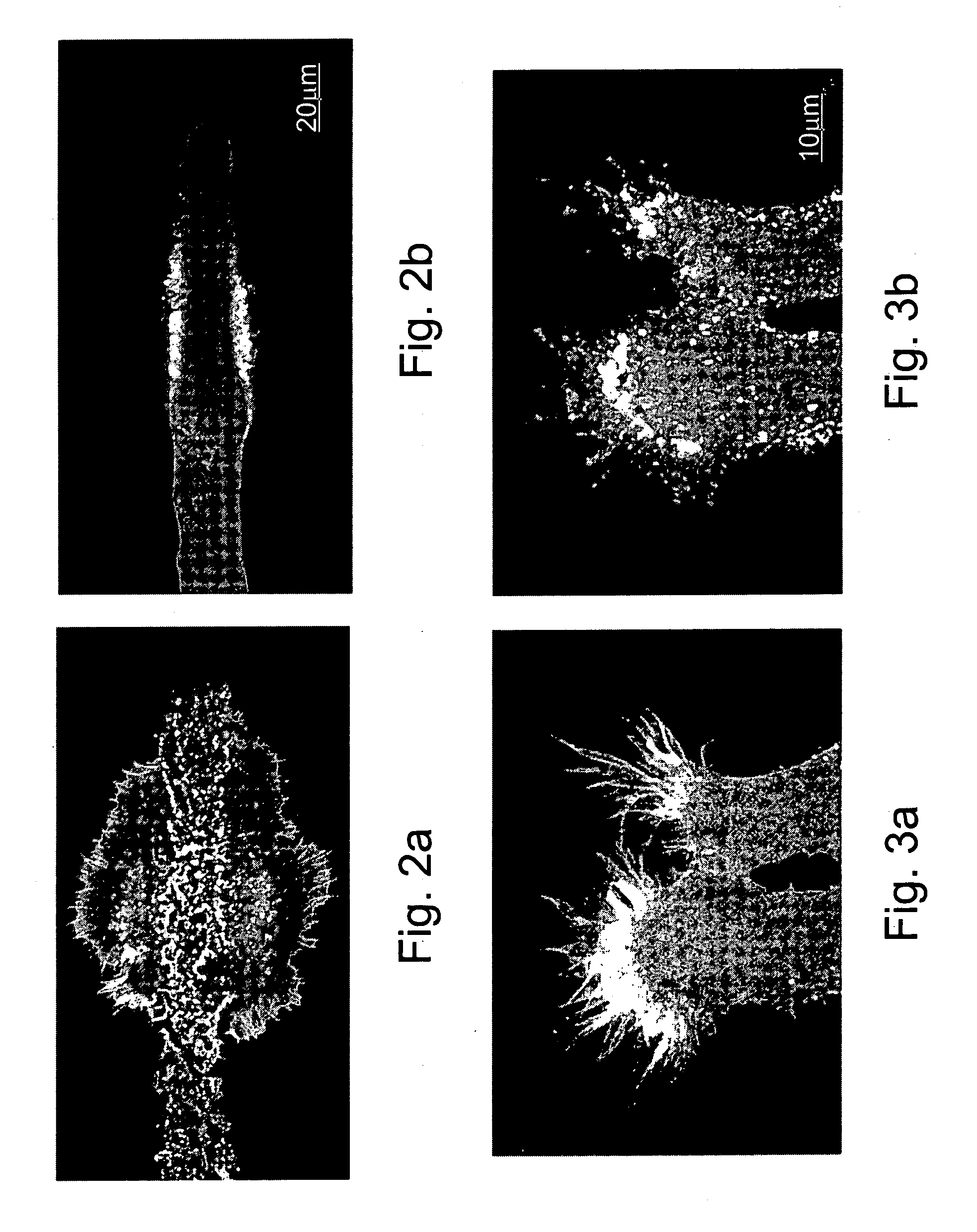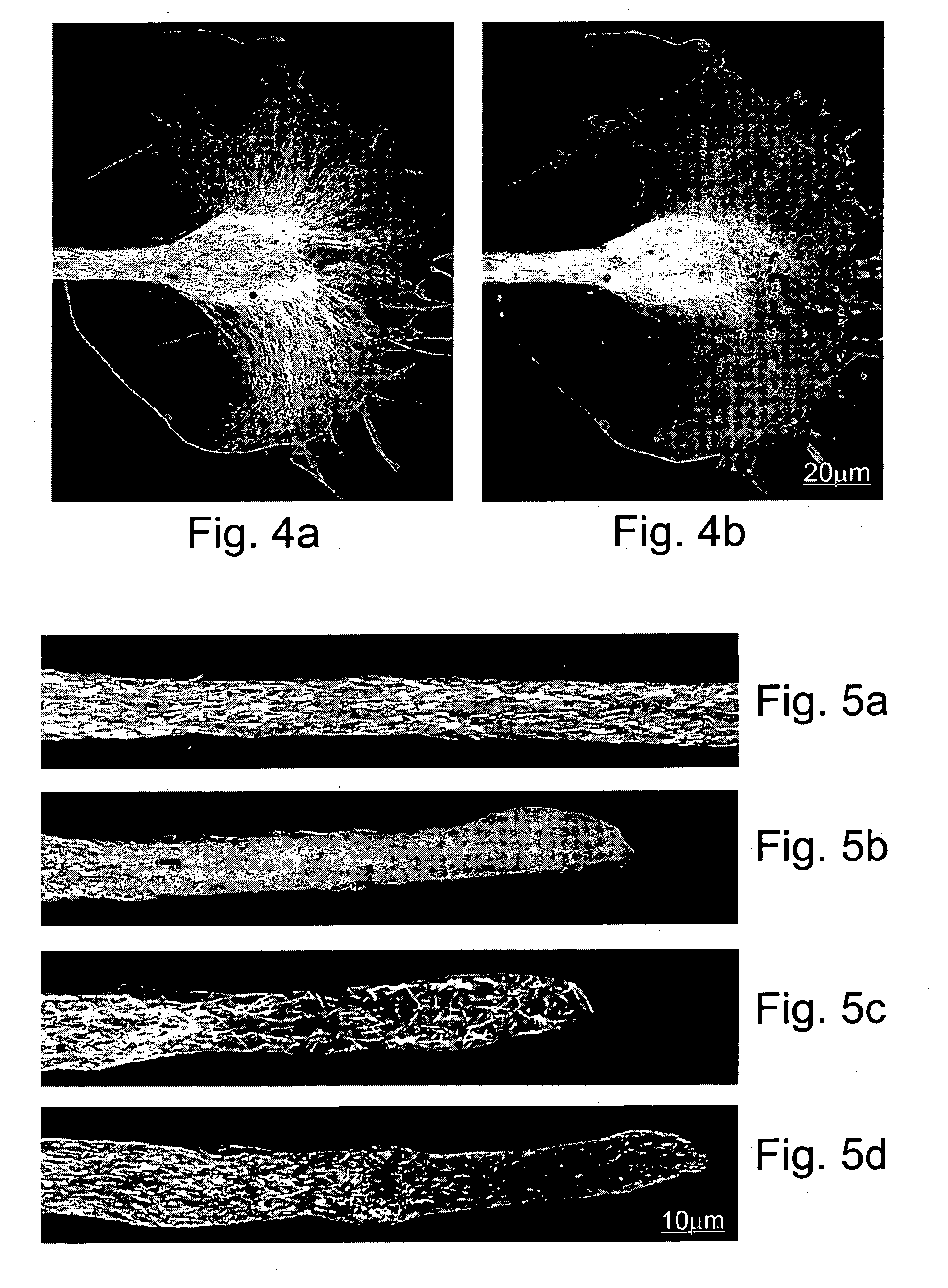Methods of determining the effect of an agent on diploid cells and/or on the pattern of expression of polypeptides expressed therewith
- Summary
- Abstract
- Description
- Claims
- Application Information
AI Technical Summary
Benefits of technology
Problems solved by technology
Method used
Image
Examples
example 1
Expression of EGFP and EYFP in Aplysia Neurons
[0101] The ability of mRNA injection to direct protein expression in neuronal cells was addressed in cultured Aplysia neurons.
[0102] Results
[0103] In vitro transcribed mRNA encoding EGFP or EYFP was injected into cultured Aplysia neuron. Cells were microscopically examined 12-24 hours following manipulation. As shown in FIGS. 1a-b, EGFP and EYFP expression was observed in about 100% of the injected neurons. Expression was observed in the cell-body, the axons and the neuritis and the fluorescent signal was evenly distributed in the cytoplasm.
example 2
EGFP-Actin Expression in Cultured Aplysia Neurons
[0104] The translational efficiency of mRNAs encoding EGFP-tagged actin and tubulin was examined in cultured Aplysia neurons.
[0105] Results
[0106] As shown in FIGS. 2a-b, injection of a solution containing mRNA encoding EGFP-actin fusion protein resulted in a high fluorescent signal in the cell body, axons and neuritis. The fluorescent signal appeared to be distributed homogeneously in the cytoplasm of the cell body, main axon and neurites but was not detected within the nucleus. Fluorescent hot spots, possibly representing adhesion plaques, were seen along the plasma membrane facing the substrate.
[0107] To determine whether the observed fluorescent signal corresponded to EGFP-tagged actin, rather than to EGFP alone, the main axon was transected and fluorescent signal distribution was imaged during the formation and extension of the lamellipodium of the growth cone. As previously described, axonal transection of cultured Aplysia ne...
example 3
Expression of EGFP-Tagged Tubulin in Cultured Aplysia Neurons
[0110] To establish that the above-described methodology can be used as a reliable tool to express various types of proteins in cultured Aplysia neurons, the mRNA of EGFP-tagged tubulin was injected into cultured Aplysia neurons.
[0111] Results
[0112] On-line confocal microscope imaging of neurons injected by a solution containing mRNA encoding EGFP-a tubulin fusion protein resulted in incorporation of the tagged tubulin into microtubules that extended into an axotomy induced growth cone's lamellipodium (FIG. 4a). Bath application of the microtubules depolymerizing agent nocodazole (5 mM) for 5 min resulted in depolymerisation of most microtubules (FIG. 4b).
PUM
 Login to View More
Login to View More Abstract
Description
Claims
Application Information
 Login to View More
Login to View More - R&D
- Intellectual Property
- Life Sciences
- Materials
- Tech Scout
- Unparalleled Data Quality
- Higher Quality Content
- 60% Fewer Hallucinations
Browse by: Latest US Patents, China's latest patents, Technical Efficacy Thesaurus, Application Domain, Technology Topic, Popular Technical Reports.
© 2025 PatSnap. All rights reserved.Legal|Privacy policy|Modern Slavery Act Transparency Statement|Sitemap|About US| Contact US: help@patsnap.com



